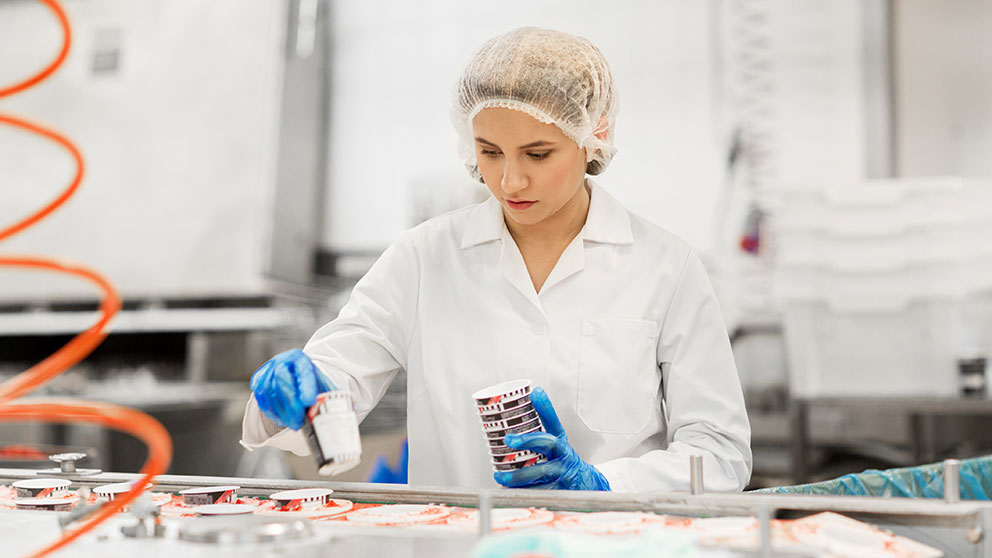Supply chain risk - how to stay afloat in a sea of disruption

Risk is both omnipresent and highly varied within food and beverage production. Perhaps no single business component is more susceptible to so many risk factors than the supply chain.
A supply chain, the backbone of any processing operation, can be disrupted by anything, from unexpected events like a global pandemic or weather, to ingredient and labour shortages, price volatility, transportation costs, or a production line hobbled by outdated equipment.
Become risk-aware
How companies anticipate and manage those risks can be a key determinant in their success, says Martin Gooch, CEO and partner of Value Chain Management International.
VCMI helps commercial businesses better align strategies and operations within both their own company and partner companies. Their process is designed to provide greater risk visibility and transparency.
Use a risk management tool
Risk management is multi-faceted, but Gooch recommends creating a risk management tool specifically for supply chains. Business operators can create a grid ranking the probability of a specific risk occurring, and its anticipated effect on the business, on a scale of low, medium and high. This creates an at-a-glance overview of the biggest risks to the company and could potentially provide the time to formulate a solution.
Creating a risk-aware culture carries a potential bonus of providing operators with even deeper insights into their business, including the supply chain.
Creating a risk-aware culture carries a potential bonus of providing operators with even deeper insights into their business, including the supply chain.
“You might identify a risk that could have a tremendous impact on your company that you had not previously thought of,” Gooch says.
For example, Value Chain Management International developed what Gooch describes as a pre-mortem for the Ontario Produce Marketing Association.
They determined risks and a management process before the risks occurred, both as a way of reducing the likelihood of them even occurring and to mitigate the risks if they happened. The pre-mortem is included as Step 8 in a report for the Ontario Produce Marketing Association.
“If someone thinks about their business and the supply chains in which they operate in a more structured, systematic way than previously, they will invariably think about risks and means to mitigate those risks in a more structured way, too,” says Gooch.
Keep product moving
Jean-Philippe Gervais, Executive VP and Chief Economist, identifies three ways food and beverage manufacturers can ensure their business approach and production facility are ready to keep their supply of products moving.
1. Conduct an internal audit of line equipment
This helps identify potential production risks before they occur, especially for companies who rely on highly specialized equipment.
“It’s not unusual for a small processor to start with purchased equipment from whatever source you can find,” Gervais says. “You know how it works because you bought it and installed it, but do you have a plan B if something stops working?”
2. Stay on top of new developments
The pace of technological progress within food processing has markedly increased with consumer demands for new and differentiated food, placing a greater need on the onus for data-led solutions. Attend trade shows, read trade publications – stay on top of your sector.
3. Lock in supply pricing
Lock in long-term deals with both customers and suppliers, Gervais says. It can eliminate some of the uncertainty and ease volatility around pricing.
“If I can lock in prices for six months or a year, it gives me peace of mind, and having those contracts at a specific price makes it easier [to deal] with my banker,” Gervais says. “If I can lock in my supply source, it gives me a lot more flexibility when I go to my banker or business partners and say, 'I've got certainty with regards to this.' It can bring peace of mind to everybody involved with the business,” he says.
Supply shortages lead to problem-solving
Rebellion Brewing Co. founder and CEO Mark Heise is familiar with the importance of managing supply chain risk.
The company faced simultaneous shortages in honey — a key ingredient in one of their popular craft beers — and beer cans.
After reading the business press, Heise saw the looming can shortage coming which led him to seek out an alternative supplier.
“I bought up a ridiculous number of cans when I knew they were available,” he says, loading up with a six-month supply instead of their usual one-month reserve.
The short-term solution to the honey shortage resulted in finding a new supplier. Longer-term, Rebellion actively broadened its entire roster of supplier partners for all ingredients and, in some cases, locked in supply with contracts. If a drought hits and impacts barley stocks, Rebellion will have a supplier who can deliver.
“We’re going to pay more for poorer quality barley, but the alternative was to not sign a contract,” says Heise, adding that would put supply — and basically the entire business — in danger since barley is a key ingredient in their beer.
Gervais reiterates that risk is part of day-to-day business, and preparation is the key.
“Risk management is not about taking no risks – it’s about mitigating the risk you’re exposed to.”
Bottom line
Risk is around every corner for food and beverage manufacturers, especially when it comes to supply chains. Take time to assess the risks and do some planning – complete an internal audit of equipment, stay on top of the industry and lock in pricing whenever possible to manage the risk.
Article by: Chris Powell

Ideas and strategies that can help you succeed in recruiting a dedicated and skilled workforce.

